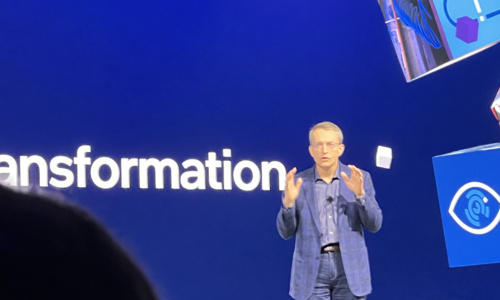CEO Pat Gelsinger opened the VisiON event in Dallas today. At this event, the brand will share its vision on a wide variety of topics related to network technology, servers, 5G and more. We will report this event in the coming days.
This is the brand’s first major physical event in a long time. In his keynote speech, the boss of the famous chip company presented his vision of the company. Gelsinger: “The changes in the tech world right now are the fastest but also the slowest”. According to Gelsinger, we are at the crossroads of the technology revolution. According to Gelsinger, fifty percent of people in the world now own a smartphone. Ninety percent of people now have an internet connection. “Sometimes it only takes a week to make a ten-year change.”
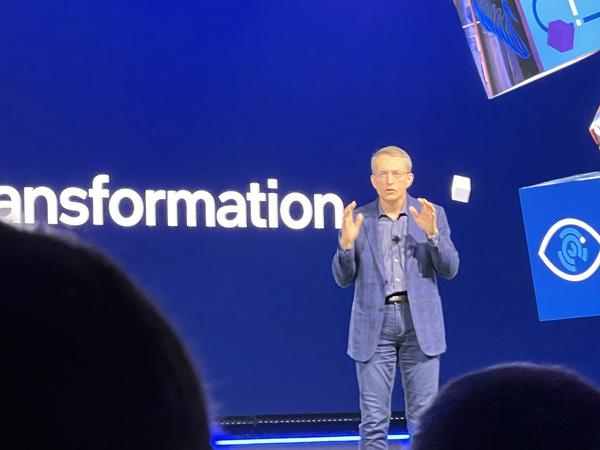
Pat Gelsinger, CEO of Intel.
An example of a smart product from Gelsinger is a suitcase-sized portable 5G base station. This allows emergency services to implement a network in any location where 5G is not available. For example, consider an environment with a flood.

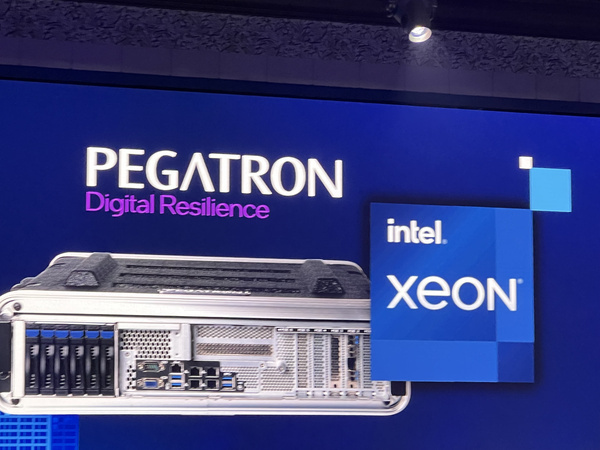
5G in suitcase format from Pegatron.
With the cloud, you can get fast computers fast, and AI makes more and more possible. Gelsinger hangs the brand’s vision on 4 ‘superpowers’. When these things come together, more possibilities open up.
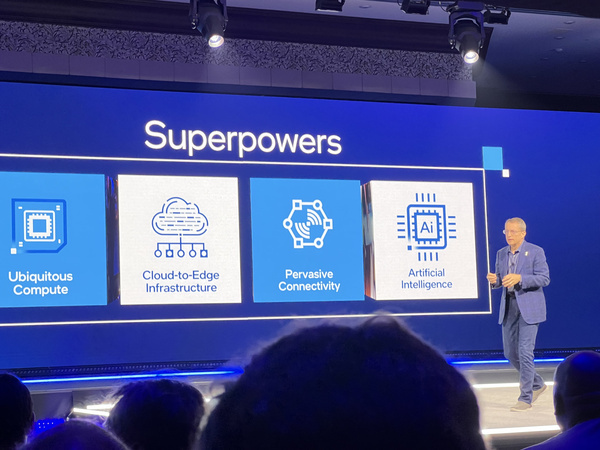
The four superpowers.
Gelsinger discusses the shortcomings in the market: “We need not only good chips, but also a better supply chain for the chip industry. It has differentiated around the world. We call it our IDM 2.0 strategy. Among other things, we are building new factories in Europe and America. Strategy is what you do, not what you say. It will provide a reliable supply chain in the chip industry.”
Michelle Johnston, Vice President of Customer Computing, said: “Computer is fundamental. We’re on our phones all day, but you shouldn’t be thinking about doing everything from your phone. Digitization is everywhere, impacting our world. Companies and organizations had to accelerate digital changes. He thought it would take a few weeks. Then we had to work from the living room and the kitchen table.”

Michelle Johnston
“How can you make sure people can work well from home? There are currently 140 million computers four years old or older, but they probably don’t support the tasks you need to do for work,” said Johnston. After that, the head of the company’s PC division introduced the new Alder Lake HX mobile processor, which is a sixteen-core mobile chip.
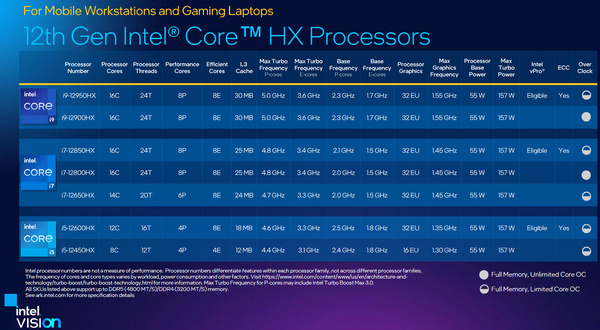
During the keynote, more information was given about the fourth-generation scalable Xeon processors or Sapphire Rapids. More cores of this chip can be used to speed up all sorts of things. For example, consider encryption, databases, artificial intelligence, and cryptography for networks. In his keynote, Bosch explained that Intel’s chips use Software Guard Extensions (SGX) to securely process data the company owns.

Raja Koduri with Arctic Sound server GPU.
Zetta scale computing (1 zetta has 21 zeros) is an important trend for the company going forward. Raja Kudori, accept this. The company wants to work on the power needed in the cloud, for example to enable metadata storage, in addition to numerous other applications.
Most of the increase in IP traffic came from video. According to Kudori, IP traffic for video has increased by 80 percent recently. To deal with this, the company developed the Arctic Sound GPU, the first AV1 hardware encoder. One card can handle 40 game streams simultaneously. “This is a multimedia supercomputer on a single chip,” Kudori said.

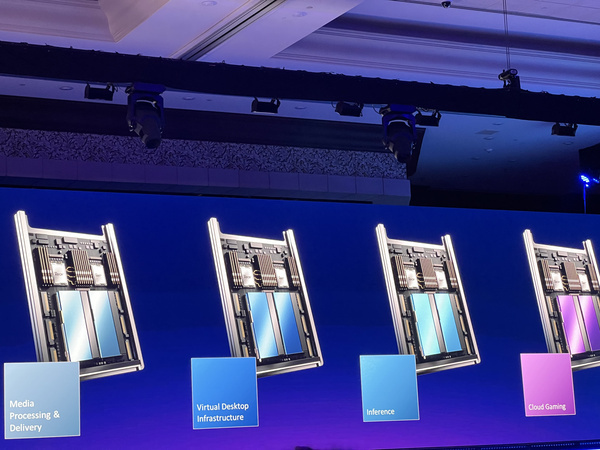

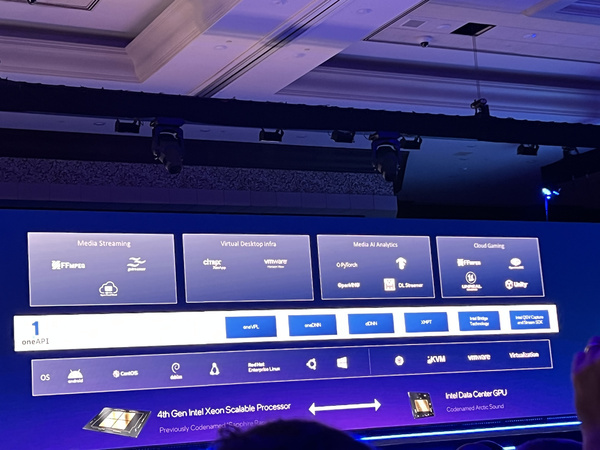

Coderi also demonstrated ‘project endgame’, a technology that allows computers to use each other’s computing power within the required latency. For example, consider a laptop where you can use the performance of your desktop for gaming.
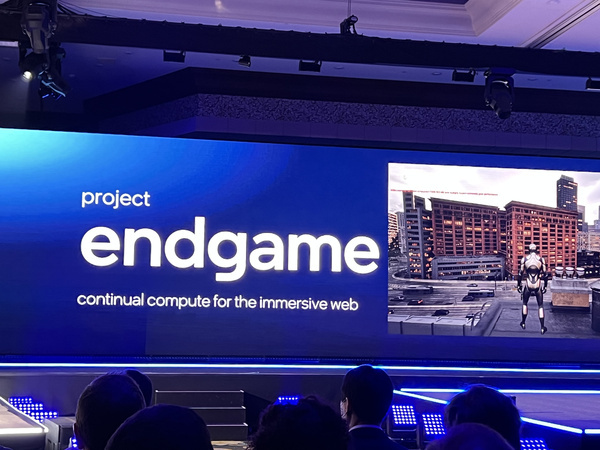
A chip for deep learning and the new Gaudi 2 AI accelerator, an alternative to Nvidia’s H100, were also presented.
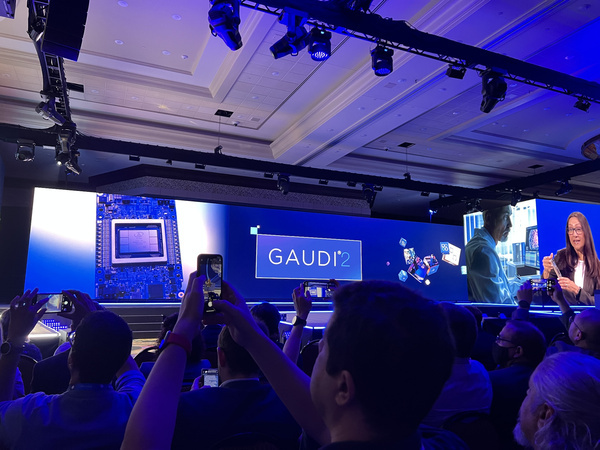
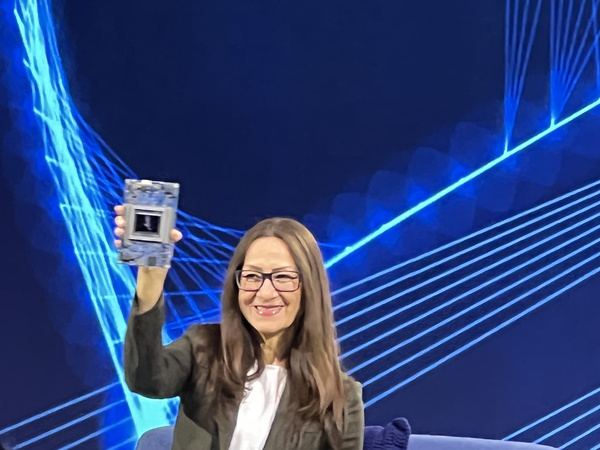

The processor is used to learn natural language, to recognize objects and other things. During the presentation, the performance of the new chip was compared with Nvidia’s chip. According to Intel, Gaudi 2 is twice as fast as Intel’s Hopper H100. The new Gaudi 2 was produced on a 7nm process, the previous model was still produced at 16nm. The chip has 24 TPCs and is used with 96GB HBM 2e memory with 2.45TB/s bandwidth. The chip consumes 600W.

Source: Hardware Info






